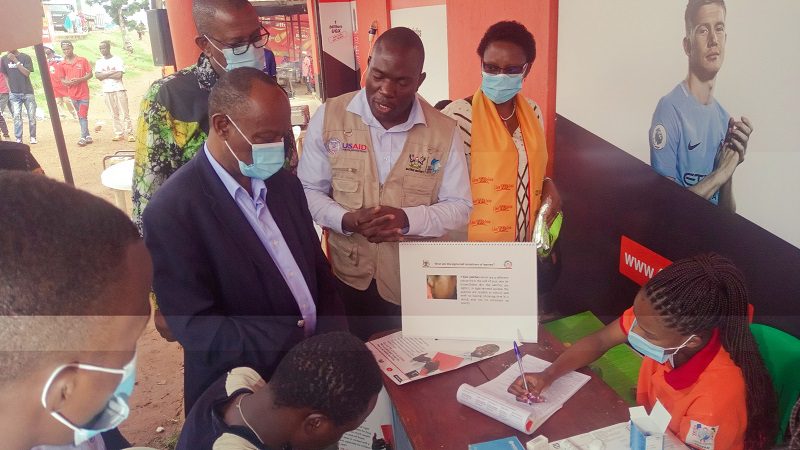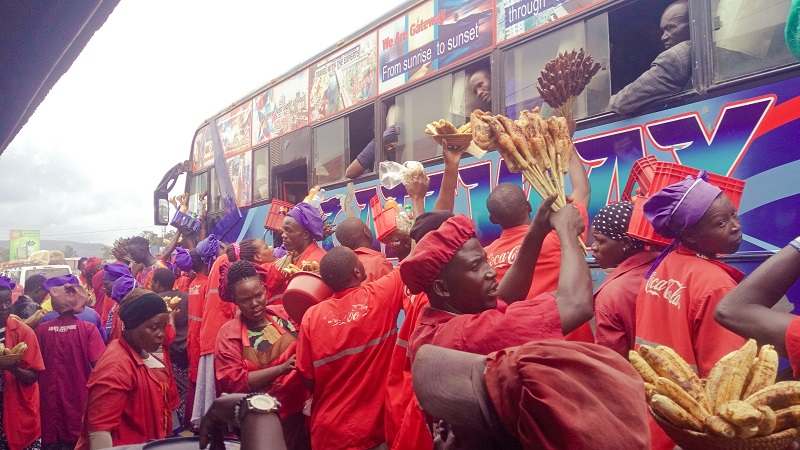
MUKONO – Every year on 24th March is World Tuberculosis (TB) and Leprosy Day. The national commemoration will be held in Butaleja district.
Ahead of the day, the Ministry of Health in partnership with USAID Local Partner health Pervices TB Activity launched a number of activities including community TB and Leprosy awareness, screening, testing, prevention and treatment across the country in Namawojoro, Mukono district.
Dr. Henry Mwebesa – Director General Health Services at the Ministry of Health told the press that they estimate over 90,000 new TB cases every year but unfortunately, about 20,000 remain unregistered which poses a big threat to society.
“The burden is not only them the 20,000 (unfound patients) but also the spread they cause. So they will find next year, the burden is even bigger than 90,000,” he added.
“So this campaign is to make sure that we pick those 20,000. We encourage everybody to come screen, test and start on treatment. The screening is free and so is treatment,” he added.
Dr. Mwebesa encouraged community members not to stigmatize people with TB, noting that, “anybody can get TB [but] the most important thing is to start these people on treatment and usually if you start treatment within three weeks, you don’t infect.”
“We should not discriminate, chase them out of our houses, out of offices, [but rather] encourage them to finish their treatment because after six months of treatment, they are cured and very normal.”
He revealed that much as TB is common amongst people living with HIV (about 52%), because their immunity is low “it doesn’t mean that everybody with HIV gets TB but also doesn’t mean that if you don’t have HIV, you will not get TB.”
He also encouraged the patients to complete their treatment and avoid resistance.
“If we start you on treatment, usually the cough and fever will go down. So some people think are okay and stop the treatment and then TB comes back stronger, develops resistance and eventually die.”
The Director General is, however, happy that this number has improved from 25% to 15% and is optimistic that with such campaigns, it will improve further.

Dr. Mary Nabukenya – Project Director for the USAID Local Partner Health Services TB Activity said, “We are here to demonstrate what is expected to be done in every district during this week.”
He calmed the hard-to-reach areas, noting that they are working with the district leadership to ensure they receive the services.
“Like in Mukono, Kome island was identified as a hard-to-reach area and we are going to support the district in a special way, support the district teams, health workers, VHTs to reach such areas.”
The campaign will be taken to schools, markets, prisons, islands and other places with many people.
TB burden in Uganda
According to the ministry of health, Uganda is one of the top 30 countries, in the world, with a high number of TB cases with approximately 30 people dying of the disease every day, more than half of this number being people living with HIV.

Statistics show that TB is 4 times more common among men than in women.
Dr. Stavia Turyahabwe, Assistant Commissioner – National TB and Leprosy Division at the Ministry of Health says the cost of treating TB is high especially if treatment is received from private health facilities which leads to poverty, but also poor people are more likely to suffer from TB due to malnutrition.
She says that the disease is mostly spread by those who do not know they have it or those who did not complete their treatment dose.
“A good number of Children with TB are either missed or diagnosed but not started on treatment unless their parents/guardians have the right information,” she said, adding that, “Every child at risk of developing TB should have access to appropriate TB prevention, diagnosis and treatment.”
Signs and Symptoms of TB
Cough for two or more weeks or on and off cough
Prolonged fevers for more than two weeks
Excessive (or Drenching) Night sweats
Coughing blood or blood-stained sputum
Unexplained weight loss
Poor weight gains among children
History of contact with a person who has TB
Chest pain
Swollen lymph nodes in the neck or armpits
Treatment for TB
Experts recommend to begin TB treatment as soon as possible following diagnosis.
“TB is curable, if detected early and you adhere to treatment as prescribed by your health worker.”
The duration of treatment for uncomplicated TB is 6 months with a daily dose
TB can fail to respond to the usual treatment if you don’t test early or if you do not take the medicines correctly as prescribed by the health worker or you get exposed to someone with resistant TB
“Good news is that drug resistant TB is also Curable! Do not miss your TB treatment,” Dr. Turyahabwe added.
Prevention and control of TB
Immunize your child at birth against TB
Go for testing and treatment as soon as you have the TB signs and symptoms
Cover your mouth and nose when coughing or sneezing with a handkerchief, any other piece of cloth or an arm/elbow
Use the mask correctly and at all times when in public or enclosed space
Put enough windows on your house to allow proper ventilation
Open windows, doors including those of vehicles such as buses and taxis
Avoid over crowded places
Stay out doors for most of the day if you have TB
If you have been found with TB disease, the health worker will start you on TB treatment.
Persons with TB disease should make sure their loved ones, people they work, study, stay or frequently interact with are also assessed and checked for TB
Children below five years old living with someone with TB will be put on preventive medicine.
Children above five years old, adolescents and adults who test negative for TB, but are living with someone with TB, will also be put on preventive medicine.





